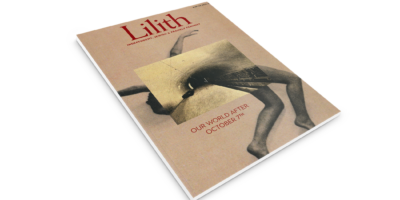
A Lady and Her Bicycle
 I couldn’t believe it — I had jumped into the pages of National Geographic. I had sprung myself across a rickety makeshift bridge, gaping at a raging river in the highlands of West Papua, Indonesia, and there I stood, mesmerized by a procession of men wearing nothing but feathers in their hair and koteka, gourds, on their penises.
I couldn’t believe it — I had jumped into the pages of National Geographic. I had sprung myself across a rickety makeshift bridge, gaping at a raging river in the highlands of West Papua, Indonesia, and there I stood, mesmerized by a procession of men wearing nothing but feathers in their hair and koteka, gourds, on their penises.
I stood in the misty rain, alongside my Papuan guide whose teeth were red as blood from chewing betel nut, praying that I wouldn’t catch fleas from sleeping in the round straw hut where I would be bunking with the village’s women, children and pigs. That night I sat around the hut’s lung-choking smoky fire exchanging shy stares and smiles with the Dani women and children, as we each grabbed fingers full of cooked sweet potato greens, slurping them noisily into our mouths. Rather than stressing about the rat scurrying around the edges of the hut’s rounded walls, I focused on the young girl making a bilum, a string bag for carrying anything from babies, to newborn pigs, to hundreds of pounds of sweet potatoes.
I couldn’t believe I was there. Me, a young Jewish woman from Rochester, New York. I had somehow managed to become a person who cycled the crowded streets of Cambodia, biked the mountains of northern Thailand and was now in a remote village worthy of National Geographic. It was intoxicating.
So you can imagine my excitement when, back in my New York humdrum life, I stumbled upon a book about Annie Londonderry, the first woman to cycle around the globe. And no, she didn’t do it in the 1990s. It was the 1890s! Obsessed with everything bicycle and energized by travel stories, particularly those of intrepid women, I couldn’t wait to get my hands on a copy of her biography Around the World on Two Wheels: Annie Londonderry’s Ride. When I learned that Annie Londonderry’s real name was Annie Cohen Kopchowsky, that her first language was Yiddish, and that she lived with her peddler husband, kids and extended family in a crowded tenement in Boston’s West End, I was entranced.
When Annie set out on this epic journey as a novice biker at age 24 in 1894, it was because two wealthy men were betting whether a woman could fend for herself and earn $5,000 while cycling the world in 15 months. Much was happening in both the women’s movement and the bicycle craze, and Annie was zealous about cycling her way out of the traditional woman’s role. She happily reinvented herself with an exciting new identity, found lots of sponsors, and gained both freedom and fame.



